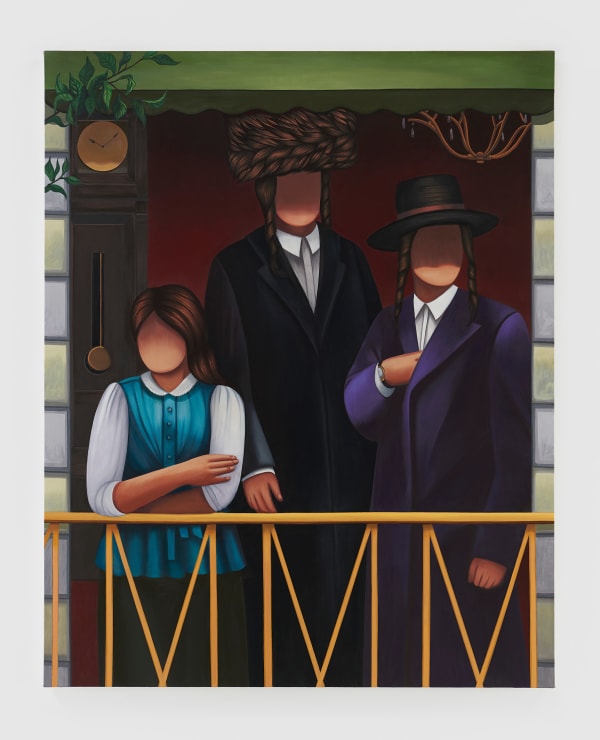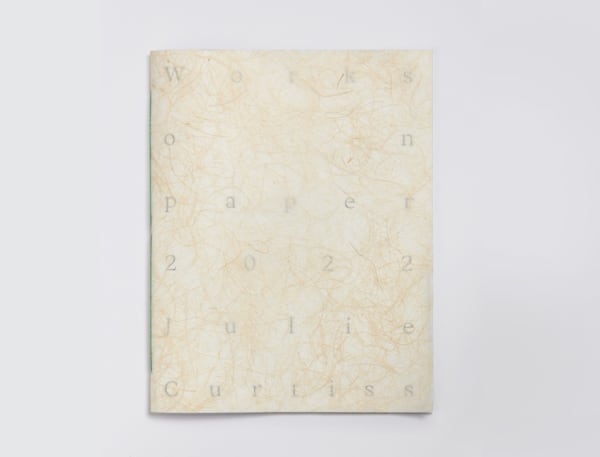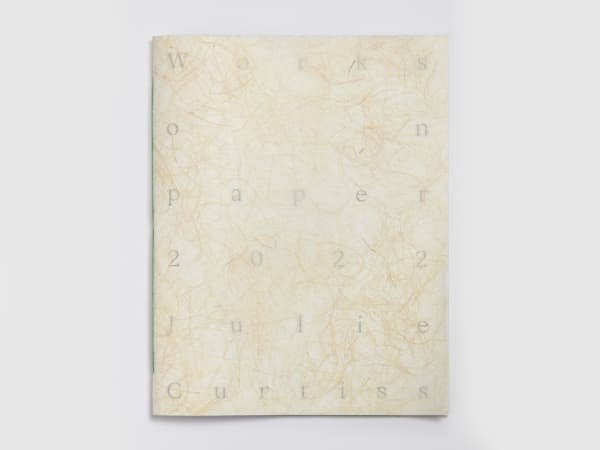|
Somnambules is Julie Curtiss’ third solo exhibition with Anton Kern Gallery, and her first in the main exhibition space on 55th Street. Somnambules is the French word for “sleepwalkers”; the works in this exhibition evoke an in-between state, almost trance-like, where the lines between the real and surreal collide. The title is also a reference to the Federico García Lorca poem, wherein a shared sensibility between the two artists can be found in the juxtaposition of things that don’t normally belong together, a mainstay of Curtiss’ approach. Somnambules consists of new paintings, works on paper, and sculptures, all demonstrating a marked evolution in the artist’s practice: the introduction of watercolor in her drawings; new materials in the sculptures; and ambitious undertakings in the paintings–including a large diptych depicting a scene in Times Square.
This exhibition is a particularly personal one for the artist. Plagued by insomnia and grappling with processing the toll the past few years have taken, Curtiss often felt like a sleepwalker herself while creating this body of work–day and night, light and darkness running into each other in a blurry timeless vacuum. In one painting, Nuit blanche, we see a woman struggling to sleep through the night. She attempts multiple sleeping positions and in the end, sits upright in palpable frustration. In another painting, Faisceaux, we see a woman’s back in a setting of shadows and light. Shape and color intersect in an eerie confluence, where time seems not to exist. Is it a dream? Is she standing in morning light or the light of the night moon? It’s impossible to tell. That in-between space is the subject of yet another painting, Waiting Room – where three women of various ages sit in a doctor’s office. One leans forward, her head in her hands: the process of waiting, the perpetual state of stasis, is agonizing.
For her first large-scale solo exhibition in the city that has been her home for many years, Curtiss wanted some of the inspiration to be New York itself. A long-gestating idea for an image of Times Square serves as a centerpiece of the exhibition. Times Square is the largest piece in the show depicting one of the area’s notorious advertising screens as the background for a group of passersby crossing in front of it in the rain. The disconcerting glow of the jumbotron screen is juxtaposed with the sexiness of the bikini-clad babe in the advertisement that flashes across it. Even in the rainy darkness, the various pedestrians are lit by a recognizable glow of the bright lights in the iconic square. Though faceless and anonymous, each feels charged with a distinct energy and history, a cross section of the millions that walk the streets of Manhattan daily. One is reminded of Caillebotte’s rainy Paris street–with Curtiss’ contemporary twist. In another painting, The balcony, three members of the Hasidic community, an omnipresent part of the Brooklyn neighborhood in which the artist resides, gaze out from a balcony–a scene directly inspired by Manet’s own painting of the same name. Here, the shadows on each of the figure’s faces both shroud and reveal them, imbuing a strong sense of mystery and ambiguity. Are they hiding in the shadows, or emerging from them to enjoy the outside light? It is, once again, impossible to tell.
In contrast with the darkness of the paintings, the works on paper depict nature, greenery, and water, embodying a sought-after respite from the harshness of New York City in the winter months. This body of drawings also continues to push her practice in new directions, with Curtiss taking on the challenge of incorporating watercolor. The result is a loosening of her sharp lines and allowing a freer hand, where amorphous and abstract shapes populate the image. In works such as Passing by and A puddle and some pedestrians, ripples of watercolor undulate and morph into waves and reflections that delve deeper into the artist’s surrealist sensibility. They are reminiscent of Man Ray’s rayographs, where light and shadow compound upon each other, bending objects and images into an almost psychedelic sphere where edges bleed into space. A series of new sculptures further delve into her interest in surrealist imagery, combining the haute and the uncanny. A stiff, beautifully shaped dress is covered in disconcertingly lifelike, handmade moths. One longs to touch such seemingly elegant fashions, but is instantly repulsed.
In all, Somnambules navigates highs and lows, darkness and light, emerging from a state of conscious unconsciousness with works that demonstrate Curtiss’ broad range of abilities, exceptional intuition, sense of humor, and drive to take risks–with many rewards.
|
 Julie CurtissTimes Square, 2022
Julie CurtissTimes Square, 2022 Julie CurtissLatched, 2022
Julie CurtissLatched, 2022 Julie CurtissWaiting room, 2022
Julie CurtissWaiting room, 2022 Julie CurtissPassing by, 2022
Julie CurtissPassing by, 2022 Julie CurtissDancers in the dark (Moon), 2022
Julie CurtissDancers in the dark (Moon), 2022 Julie CurtissSlumber, 2022
Julie CurtissSlumber, 2022 Julie CurtissFaisceaux, 2022
Julie CurtissFaisceaux, 2022 Julie CurtissLatched, 2022
Julie CurtissLatched, 2022 Julie CurtissGator, 2022
Julie CurtissGator, 2022 Julie CurtissThe balcony, 2022
Julie CurtissThe balcony, 2022 Julie CurtissNuit blanche, 2022
Julie CurtissNuit blanche, 2022 Julie CurtissMidnight bath, 2022
Julie CurtissMidnight bath, 2022 Julie CurtissFreudian Slip, 2022
Julie CurtissFreudian Slip, 2022 Julie CurtissIce cream truck, 2022
Julie CurtissIce cream truck, 2022 Julie CurtissTrickster, 2022
Julie CurtissTrickster, 2022 Julie CurtissSpring, 2022
Julie CurtissSpring, 2022









































